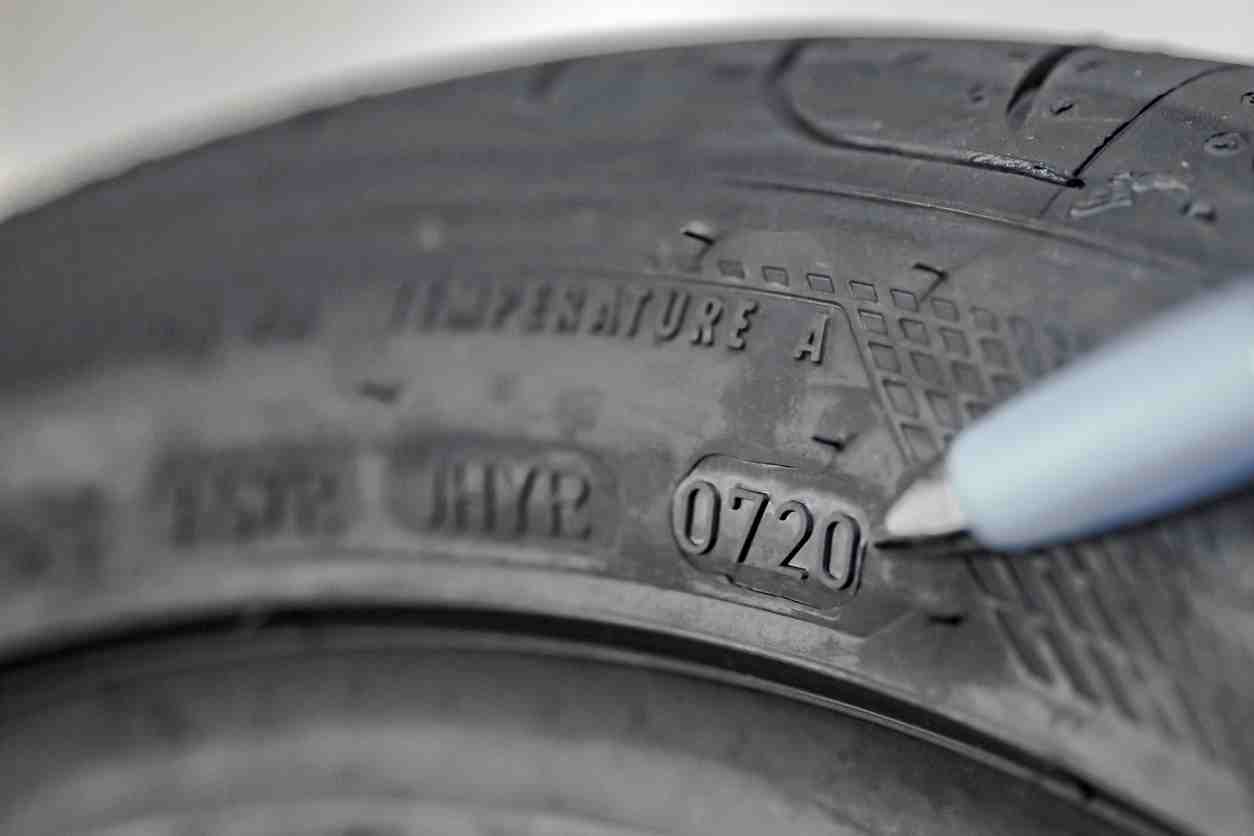The age of your car tyres plays an important role alongside the mileage when it comes to your safety. The DOT number is relevant to provide clarity here. It provides clear information about the date of manufacture, which is highly relevant when buying a used car, for example. Find out everything you need to know about the age of your tyres here.

The abbreviation DOT stands for Department of Transportation, which is the US Department of Transportation. In 1980, the authority introduced the regulation that the production date must be indicated on every tyre. All established tyre manufacturers now comply with this, which is good for you as a driver in terms of safety.
As with all other information, from the type of tyre to the dimensions, you will find the DOT number on the tyre sidewall. It is easily recognisable by the letters DOT in front of it. The last four digits are relevant for the date of manufacture. They are interpreted as follows:
For example, if the number combination on your car tyres is 1020, they were produced in the 10th calendar week of 2020. The DOT marking with its numbers and letters contains further information in addition to the production date. This includes the place of manufacture, the code for the tyre size and the optional manufacturer coding.
Tyres are the only contact between your vehicle and the surface you are driving on. Tyres are therefore a decisive factor when it comes to driving safety. As they are practically permanently exposed to different weather conditions such as heat, cold and sun, the rubber compounds from which the tyres are made age. The material hardens, becomes brittle over time and is no longer as resilient as it was at the beginning. Thanks to the DOT marking, you can tell exactly how old your tyres are.
At a certain age, you should change your tyres for your own safety in order to minimise the risk of a puncture or even an accident. There are different recommendations:
However, everyone agrees that tyres should be replaced after 10 years at the latest. The DOT number allows you to easily recognise the correct age of the tyres and know whether there is a need for action.
Incidentally, with one exception, there are no legal regulations on when car tyres must be changed. The special regulation applies to trailers with a speed of 100 km/h, as the corresponding tyres must be replaced after 6 years at the latest.
Important to know: Another factor is the tread depth, which according to legal regulations must not be less than 1.6 mm. The ADAC and comparable institutions recommend a minimum tread depth of 3 mm for summer tyres and even 4 mm for all-season and winter tyres.
Regardless of the DOT information at the time of production, tyres also age if they are stored incorrectly. Ideally, tyres should be stored in a cool, dry room out of direct sunlight. A distinction is also made as follows:
Alternatively, car dealers and garages offer a storage service for which a fee of varying amounts is charged.
When you look at the tyre sidewalls on your new vehicle, you will notice from the DOT number that the set of tyres is already one or two years old and will wonder how this can be. The explanation is simple: in order to ensure high availability of the numerous tyre models, tyres based on the DOT may be described as brand new for the first three years and as new for up to five years. The prerequisite for this is proper storage.
Whether your tyres are old or worn out: We have a large selection of tyres and complete wheels from well-known manufacturers for all vehicle types.
Use our easy-to-understand tyre search function to find the perfect new tyres for your car: